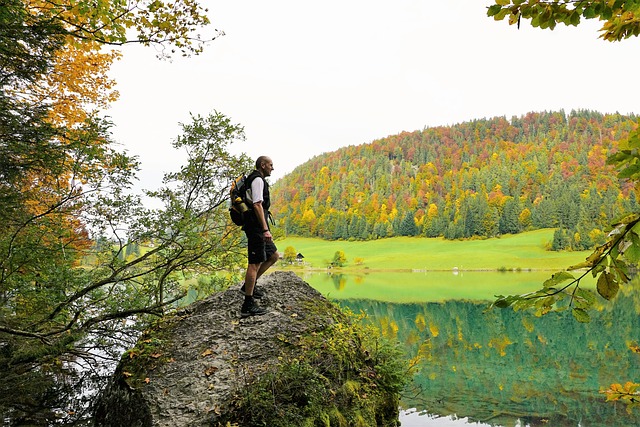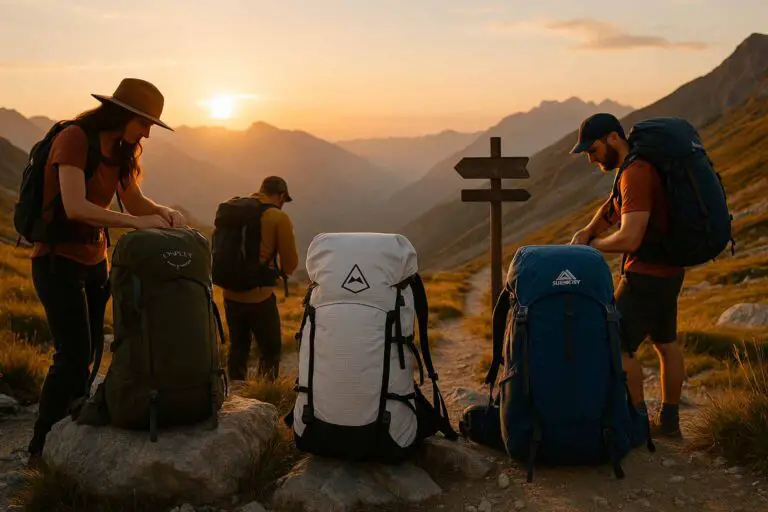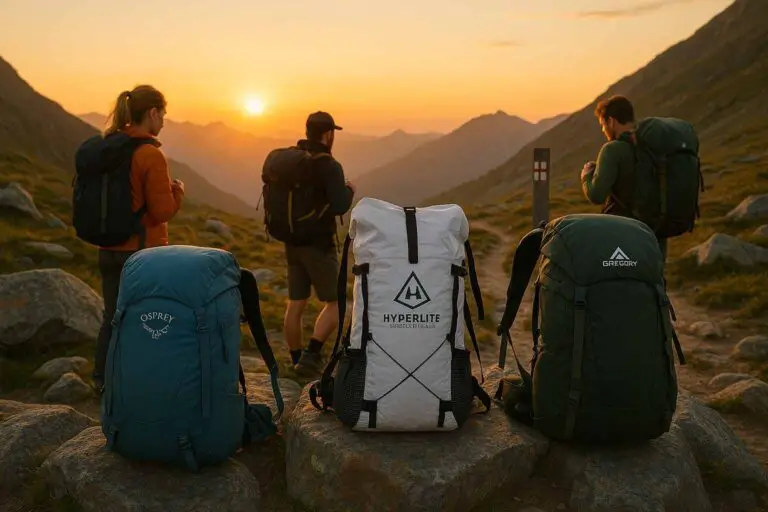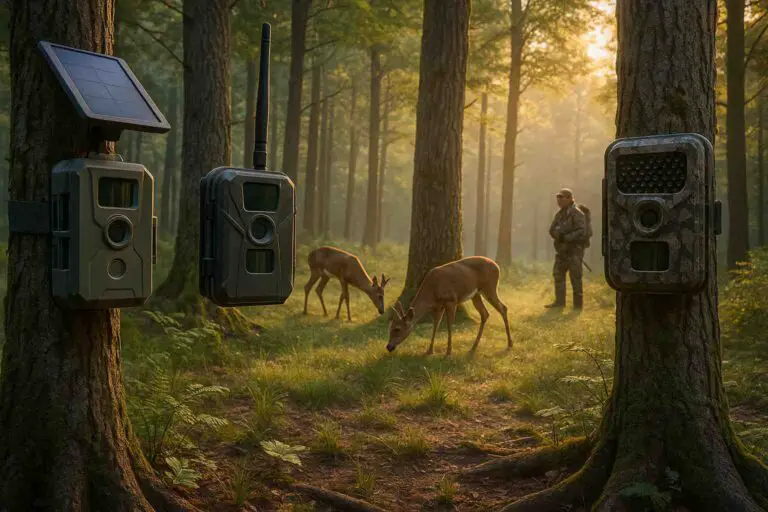Hi there! Are you ready to embark on a hiking adventure that takes you off the beaten path? If so, you’ve probably come across the term “bushwhacking” in your research. But what exactly does bushwhacking mean in hiking? Don’t worry, I’ve got you covered!
Bushwhacking refers to the act of venturing off established trails and navigating through unmarked, dense, and often challenging terrain while hiking. It involves forging your own path, exploring untamed wilderness, and discovering hidden areas not accessible via traditional trails.
In this article, I’m going to dive deep into the topic of bushwhacking. I’ll unravel its meaning, explore the challenges it presents, and equip you with the knowledge and skills needed to conquer off-trail exploration like a pro. So, whether you’re a seasoned hiker looking to expand your horizons or a beginner eager to explore uncharted territories, this article will provide you with a comprehensive understanding of bushwhacking.
By the end of this read, you’ll be ready to embrace the thrill and excitement of venturing into the wilderness, forging your own path, and discovering hidden gems that can only be found off the beaten track. So, let’s unravel the mysteries of bushwhacking together!
Understanding Bushwhacking
When it comes to hiking, bushwhacking refers to the act of venturing off established trails and forging your own path through unmarked and often dense terrain. It’s like becoming an explorer, navigating through untouched wilderness and discovering hidden corners of nature that few have witnessed.
The term “bushwhacking” has its origins in the early days of settlers in North America. They would literally “whack” through the dense undergrowth of forests, using axes or machetes to clear a path for themselves. Today, bushwhacking has evolved into a thrilling and adventurous pursuit for hikers who crave a more challenging and immersive experience in the great outdoors.
But why would anyone choose to go bushwhacking instead of sticking to established trails? Well, there are several reasons. Firstly, bushwhacking allows you to escape the crowds and find solitude in nature. It takes you away from the well-trodden paths and into unexplored territories, where you can truly connect with the wild.
Moreover, bushwhacking opens up a whole new world of discovery. You have the freedom to explore hidden valleys, pristine lakes, and breathtaking viewpoints that are off-limits to those who follow the beaten path. It’s an opportunity to see nature in its raw and untouched form, where every step brings a sense of anticipation and wonder.
However, it’s important to note that bushwhacking is not for everyone. It requires a certain level of skill, preparation, and awareness. As you navigate through unmarked terrain, you’ll encounter challenges that are absent on established trails. This brings me to the next section, where I’ll delve into the obstacles and difficulties associated with bushwhacking.
The Challenges of Bushwhacking
Bushwhacking may sound exciting and adventurous, but it’s important to be aware of the challenges that come with venturing off-trail. Let’s take a closer look at some of the obstacles and difficulties you may encounter while bushwhacking:
- Navigation and Route Finding: When you leave the marked trails behind, you’ll need to rely on your navigation skills to find your way. Unmarked terrain can be disorienting, with no clear paths or signs to guide you. It’s essential to develop strong map reading, compass, and GPS skills to navigate through the wilderness effectively. Paying attention to topographic features, such as ridgelines and water bodies, can also help you determine your location.
- Terrain and Obstacles: Bushwhacking often involves traversing challenging and varied terrain. Thick vegetation, dense undergrowth, fallen trees, and rocky terrain can slow your progress and make each step more difficult. Steep inclines, gullies, and water bodies like streams or marshes may also present obstacles that require careful maneuvering. Being prepared for these challenges and having the right gear, such as sturdy boots and protective clothing, can make a significant difference.
- Time and Energy: Bushwhacking typically takes more time and energy compared to hiking on established trails. The effort required to navigate through dense vegetation and uneven terrain can slow you down, so it’s important to plan your time accordingly. Keep in mind that your pace will likely be slower, and factor in additional breaks to rest and refuel. Building physical endurance through regular hiking and conditioning exercises can help you tackle the demands of bushwhacking.
- Hazards and Risks: Venturing off-trail introduces additional risks and hazards. You might encounter wildlife, such as snakes or bears, so it’s essential to research and understand the wildlife in the area you plan to bushwhack through. Additionally, there may be hidden dangers like loose rocks, unstable terrain, or poisonous plants. Developing a keen sense of awareness and taking necessary safety precautions, such as carrying a first aid kit and informing someone about your plans, is crucial to mitigate risks.
Despite these challenges, bushwhacking can be an immensely rewarding experience. With proper preparation, skills, and a positive mindset, you can overcome these obstacles and embrace the thrill of exploring untamed landscapes. In the next section, I’ll delve into the essential gear and preparation needed for a successful bushwhacking adventure.
Essential Gear and Preparation
Before you embark on a bushwhacking adventure, it’s crucial to have the right gear and be adequately prepared. Here’s a rundown of the essential items and preparation steps you should consider:
1. Gear for Bushwhacking:
-
- Sturdy Hiking Boots: Invest in a pair of comfortable, ankle-supporting boots with good traction for navigating rough terrain.
- Clothing: Dress in layers to accommodate changing weather conditions. Opt for moisture-wicking and quick-drying materials to keep you comfortable.
- Backpack: Choose a durable backpack with sufficient capacity to carry your gear and supplies.
- Navigation Tools: Carry a detailed topographic map, a reliable compass, and a GPS device to help you navigate through unmarked terrain.
- Protection from Elements: Pack a waterproof and windproof jacket, a hat, sunglasses, sunscreen, and insect repellent.
- Tools and Accessories: Bring a sturdy knife or multi-tool, a headlamp or flashlight, extra batteries, and a whistle for emergencies.
- First Aid Kit: Carry a well-stocked first aid kit, including basic medical supplies and any necessary personal medications.
2. Trip Planning and Safety Measures:
-
- Research and Map Study: Study the area thoroughly, including topographic maps and satellite imagery, to identify potential routes and landmarks.
- Leave No Trace Principles: Familiarize yourself with Leave No Trace principles and practice them during your bushwhacking adventure to minimize your impact on the environment.
- Inform Others: Share your trip details, including your planned route and estimated return time, with a trusted friend or family member. This ensures someone knows where you are and can alert authorities if needed.
- Weather Check: Check the weather forecast before your trip and be prepared for changing conditions. Adjust your plans accordingly to ensure your safety.
- Water and Food: Carry an ample supply of water and pack enough food for the duration of your trip, considering the extra energy expenditure involved in bushwhacking.
- Emergency Preparedness: Familiarize yourself with basic wilderness first aid techniques and know how to handle potential emergencies. Carry emergency communication devices like a satellite phone or personal locator beacon if you’ll be in remote areas.
Remember, thorough preparation is key to a successful bushwhacking adventure. Take the time to gather the necessary gear, plan your trip meticulously, and prioritize safety at all times.
Techniques and Strategies for Bushwhacking
When it comes to bushwhacking, employing the right techniques and strategies can make your off-trail adventure safer and more enjoyable. Let’s explore some key approaches to help you navigate through unmarked terrain like a pro:
1. Route Selection:
-
- Plan your route carefully: Consider your skill level, physical abilities, and the difficulty of the terrain. Start with less challenging routes and gradually progress to more demanding ones as you gain experience.
- Use natural features: Look for existing animal trails, ridge lines, or watercourses to guide your path. These natural features often offer easier and more manageable routes through the wilderness.
- Evaluate the terrain: Analyze the topography, vegetation density, and potential obstacles to determine the most feasible and efficient route.
2. Navigation and Map Reading:
-
- Familiarize yourself with topographic maps: Learn how to interpret contour lines, symbols, and scale to understand the terrain’s features and elevations.
- Use a compass and GPS: Learn how to use a compass for basic navigation, and use a GPS device as a backup. Regularly check your bearings and cross-reference with the map to stay on track.
- Landmarks and bearings: Identify prominent landmarks or features visible in the distance and use them as reference points to confirm your direction.
3. Bushwhacking Etiquette:
-
- Respect the environment: Practice Leave No Trace principles, such as minimizing your impact, staying on durable surfaces, and avoiding trampling vegetation.
- Wildlife awareness: Be mindful of the wildlife in the area and observe from a safe distance. Avoid disturbing their habitats or engaging in behaviors that may attract animals.
- Share the trail: If you encounter fellow hikers or wildlife photographers, be courteous and communicate to coordinate your movements and avoid disrupting their experience.
4. Safety Measures:
-
- Stay aware of your surroundings: Continuously scan the terrain for potential hazards like unstable rocks, slippery surfaces, or dangerous wildlife.
- Pace yourself: Bushwhacking can be physically demanding, so monitor your energy levels and take regular breaks to rest, hydrate, and refuel.
- Communication and emergency preparedness: Carry a whistle or other signaling devices to attract attention if needed. Ensure you have a way to communicate in case of emergencies, such as a satellite phone or personal locator beacon.
Remember, bushwhacking requires careful attention to navigation and the environment. With experience, you’ll develop a better sense of route selection and improve your skills in reading the landscape. By practicing good bushwhacking etiquette and prioritizing safety, you’ll have a rewarding and fulfilling off-trail experience.
Next, I’ll provide you with tips and advice to enhance your physical and mental preparedness for successful bushwhacking.
Tips for a Successful Bushwhacking Experience
To ensure a successful bushwhacking experience, it’s important to prepare yourself physically and mentally for the challenges you’ll encounter. Here are some valuable tips to enhance your readiness and make the most of your off-trail adventure:
1. Physical Preparedness:
-
- Build Endurance: Engage in regular cardiovascular exercises such as hiking, jogging, or cycling to improve your stamina. Gradually increase the intensity and duration of your workouts to match the demands of bushwhacking.
- Strength Training: Focus on exercises that target your lower body, core, and upper body strength. Squats, lunges, planks, and upper body exercises like push-ups or pull-ups will help you tackle steep terrain and maneuver through obstacles.
- Flexibility and Balance: Incorporate stretching exercises and yoga into your routine to improve flexibility and balance. This will aid in navigating uneven terrain and reduce the risk of injuries.
2. Mental Preparedness:
-
- Stay Positive and Patient: Bushwhacking can be mentally challenging. Embrace a positive mindset, expect obstacles, and be patient with yourself. Enjoy the process of exploration and view challenges as opportunities for growth.
- Practice Mindfulness: Engage in mindfulness techniques such as deep breathing, grounding exercises, or meditation to stay focused and present in the moment. This can help you navigate obstacles and make sound decisions.
- Develop Wilderness Skills: Continuously educate yourself on wilderness survival skills, such as fire-making, shelter-building, and basic first aid. These skills can boost your confidence and make you better equipped to handle unexpected situations.
3. Learn from Experience:
-
- Start with Easy Routes: Begin with less challenging bushwhacking routes to gain experience and gradually progress to more difficult terrain as your skills and confidence grow.
- Reflect and Adapt: After each bushwhacking trip, reflect on what went well and what could be improved. Learn from your experiences and adjust your approach accordingly to become a more adept bushwhacker.
- Seek Knowledge: Attend workshops, join hiking clubs, or connect with experienced bushwhackers to learn from their insights and gain practical knowledge. Sharing experiences and tips with fellow adventurers can enhance your skills and expand your horizons.
4. Safety First:
-
- Carry Essential Safety Gear: Always have a well-stocked first aid kit, emergency communication devices, and navigation tools. Ensure you know how to use them effectively.
- Stay Hydrated and Nourished: Pack enough water and nutritious snacks to fuel your body during your bushwhacking adventure. Stay hydrated and replenish electrolytes as you exert yourself.
- Know When to Turn Back: If you encounter unsafe conditions, inclement weather, or feel overwhelmed, trust your instincts and be willing to change your plans or turn back. Your safety should always take precedence.
Conclusion
In conclusion, bushwhacking in hiking is the exhilarating pursuit of venturing off established trails and exploring unmarked, dense terrain. It offers the opportunity to forge your own path, immerse yourself in untamed wilderness, and discover hidden gems.
By understanding the challenges, equipping yourself with the right gear and skills, and embracing the adventure, you can unlock a world of off-trail exploration that will leave you in awe of nature’s wonders. So, lace up your boots, step into the wild, and let bushwhacking redefine your hiking experience.
Next Read: Thru-Hiking: Everything You Need To Know – From Dream To Adventure








